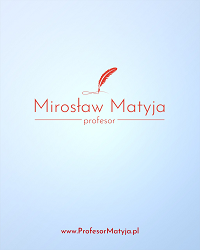Differences in Increasing Students' Communication Skills and Mathematical Problem Solving through Project-Based Learning with Virtual Manipulative and Physical Manipulative Media at SMP Plus Jabal Rahmah Mulia Medan
Abstract
This study aims to analyze the differences in the improvement of mathematical communication skills and mathematical problem solving of students who are taught using manipulative virtual learning media and physical manipulative learning through project-based learning models (PjBL), as well as analyzing the performance of class VII students of SMP Plus Jabal Rahmah Mulia Medan in solving problems. questions that measure communication skills and mathematical problem solving. Data obtained through subjective tests or essay tests, each of which measures the students' mathematical problem solving and communication skills. Data were analyzed using ANACOVA test. The population in this study were all students of class VIII of the private high school Jabal Rahmam Mulia for the 2020/2021 academic year. While the sample in this study is class VIII1 which is the first experimental class which is taught using manipulative virtual learning media and class VIII2 is the second experimental class which is taught using physical manipulative learning media. Based on the results of the ANACOVA calculation, the analysis results obtained F_hitung = 3,450 ˃ Ftable = 3.38 and with sig = 000, because the significant level is smaller than 0.05 so that H_0 is rejected and H_a is accepted. Thus, there are differences in problem-solving abilities between students who are given a realistic mathematics approach assisted by macromedia flash and students who are given a contextual approach assisted by macromedia flash. Based on the results of the analysis F_count = 20.889 ˃ F table = 3.38 and with sig = 000, because the significant level is smaller than 0.05 so that H_0 is rejected and H_a is accepted. Thus, there are differences in mathematical communication skills between students who are given virtual manipulative assisted project-based learning (PjBL VM) and students who are given physical manipulative assisted project-based learning (PjBL PM).
Keywords
Full Text:
PDFReferences
Dahar, R.W. (2011). Teori Belajar dan Pembelajaran. Jakarta : Penerbit Erlangga.
Darwis., Gandung S, dan Anggraini. (2014). Peningkatan Pemahaman Siswa pada Materi Volume Kubus dan Balok Menggunakan Alat Peraga di Kelas V SDN Pebatae Kecamatan Bumi Raya Kanbupaten Morowali. Indonesia: Jurnal Kreatif Vol.1 No.1
Depdiknas. (2006). Peraturan Pemerintah Nomor 19 Tahun 2005 tentang Standar Nasional Pendidikan. Jakarta : Depdiknas.
Fitri, S., & Zahari, C.L. (2019). The implementation of blended learning to improve understanding of mathematics. The Sixth Seminar Nasional Pendidikan Matematika Universitas Ahmad Dahlan 2018: IOP Conf. Series: Journal of Physics: Conf. Series 1188 (2019) 012109, 2018, doi:10.1088/1742-6596/1188/1/012109.
Fitri, S., Syahputra, E., & Syahputra, H. (2019). Blended Learning Rotation Model of Cognitive Conflict Strategy to Improve Mathematical Resilience in High School Students. International Journal of Scientific & Technology Research, 1 (1).
Halat dan Peker, (2011). The Impacts of Mathematical Representations Developed Trough Webquest and Spreadsheet Activities on The Motivation of PreService Elementary School Teachers. The Turkish Online Journal of Educational Technology (TOJET) Volume 2 Issue 2
Ihedioha, S. A. (2014). Students’ Ability and Achievement in Recognizing Multiple Representations in Algebra. Government Secondary School Bwari, Federal Capital Territory Abuja: Nigeria.
Irhamna, Amry., and Syahputra H. (2020). Contribution of Mathematical Anxiety, Learning Motivation and Self-Confidence to Student’s Mathematical Problem Solving. Budapest International Research and Critics in Linguistics and Education (BirLE) Journal Vol 3 (4): 1759-1772.
Jhonson, Cynthia S., dan Shanon Delawsky. (2013). Project Based Learning and Student Engagement. Canada : Academia Research International ISSN 2223-9944.
Karaduman, B. (2013). The relationship Between Prospective Primary Mathematics Teachers’ Attitudes Towards problem Based-Learning and Their Studying Tendence. Turki: Istanbul University, Hasan Ali Yucel Education Faculty.
Laschinger, H.K.S,Michael, L, Arla, D & Debra, G. (2009). Workplace Empowerment, Incivility, and Burnout: Impact on Staff Nurse Recruitment and Retention Outcomes. Journal of Nursing Management. Canada: Blackwell Publishing Ltd. Vol. 17 (302- 311).
Muharni. (2013). Peningkatan Aktivitas Pebelajaran Matematika Menggunakan Alat Peraga Konkrit Kelas III SDN 19 Sungai Kunyit. Pontianak: Universitas Tanjungpura.
Noening, A. (2015). Penerapan Media Pembelajaran Inovatif Dalam Pembelajaran Matematika Sekolah Dasar Di PGSD Tegal. Jurnal Penelitian Pendidikan Volume 31 No. 2.
Nurul, F. (2012). “Peningkatan Keaktifan Belajar Melalui Metode Permainan Domino Pada Pembelajaran Matematika Siswa Kelas VI SD Negeri 01-02 Balong Kecamatan Jenawi Kabupaten Karanganyar Tahun Pelajaran 2012/2013”. Skripsi: Universitas Muhammadiyah Surakarta.
Ozdemir Soner Mehmet, (2010). An Examination of the Educational Programs Held for Juvenile Delinquents in Turkey. Education. Vol. 130 (3). Spring: Academic Research Library.
Patricia S, Gwenanne Salkind, dan Johnna J.Bolyard. (2008). Virtual Manipulatives Used by K-8 Teachers for Mathematics Instruction: Considering Mathematical, Cognitive, and Pedagogical Fidelity. Amerika Serikat : West Virginia University
Rinayanti, (2014), Pendekatan Pendidikan Matematika Realistik Berbantuan Media Grafis Berpengaruh Terhadap Hasil Belajar Matematika Siswa Kelas V Sd Gugus 1 Mengwi, Journal Mimbar PGSD Universitas Pendidikan Ganesha, 2 (1).
Rostini. (2013). Meningkatkan Hasil Belajar Bangun Ruang Melalui Penggunaan Alat Peraga di SMPN 2 Sebuku Kelas VIII Kabupaten Nunukan Kaltim. Malang: Universitas Negeri Malang.
Schoenfeld, A. H. (1985). Mathematical Problem Solving. Orlando, Florida: Academic Press.
Surya, E. dan Istiawati, S.N.(2016). Mathematical Representation Ability In Private Class Xi Sma Ypi Dharma Budi Sidamanik Siswa. Jurnal Saung Guru Vol.VIII No.2. ISSN 2086-7484.
TIMSS and PIRLS. (2015). Relationship Among Reading, Mathematics, and Science Achievement at the Fourth Grade-Implication for Early Learning. Michael and Mullis : TIMSS and PIRLS International Study Center. Dapat diakses pada : http://timss.bc.edu.
Trianto. (2013). Mendesain Model Pembelajaran Inovatif, Progresif, Konsep, Landasan, dan Implementasinya Pada Kurikulum Tingkat Satuan Pendidikan (KTSP). Jakarta: Kencana Prenada Media Group.
Yuan, Y, Chun-Yi Lee , and C.‐H. Wang. (2010). A comparison study of polyominoes explorations in a physical and virtual manipulative environment. Journal of Computer Assisted Learning 26(4):307 – 316.
DOI: https://doi.org/10.33258/birle.v4i1.1608
DOI (PDF): https://doi.org/10.33258/birle.v4i1.1608.g2044
Article Metrics
Abstract view : 224 timesPDF - 159 times
Refbacks
- There are currently no refbacks.

This work is licensed under a Creative Commons Attribution-ShareAlike 4.0 International License.

This work is licensed under a Creative Commons Attribution-ShareAlike 4.0 International License

_.gif)



















_.gif)



